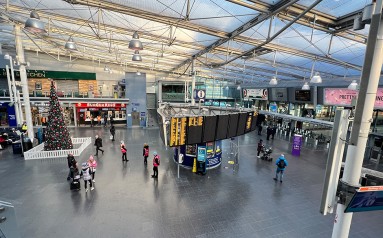Page content
Indoor navigation made easy

GoodMaps is available at Manchester Piccadilly station
It can be a challenge to find your way to the restrooms, navigate where to get something to drink or eat or how to get to the platform at extensive transportation hubs. Millions of people around the world experience this every day. These problems are particularly serious when personal safety or additional routing requirements have to be taken into account. It is not always easy for blind or visually impaired passengers, parents with small children, elderly visitors or those unfamiliar with the area to find their way around and reach their train on time. In order to offer its passengers an improved travel experience, the British TransPennine Express (TPE) railroad company has partnered up with GoodMaps. The implementation to deploy the navigation service across TPE's 19 stations was a smooth process. Accessibility and Transport Integration Manager Chris Jeffery said: "If we had chosen a technology that required the installation of beacons or equipment, we would have needed access permissions, complex risk assessments and other requirements for listed buildings. But with GoodMaps, we have a surveyor scanning the station with a small handheld device, so these are not required." The service offers benefits to all travelers, Jeffery said. "Some may have travel anxiety, others want the certainty of finding their platform on time - GoodMaps provides that."
A new way to find your way
With a wide range of multimodal wayfinding options - including stepless routing, verbal and text-based directions and a variety of voice options - the GoodMaps app offers advanced features that further enhance the overall passenger experience. These include a precise 2D map and a fully immersive augmented reality view. With these additions, the app now has an expanded feature set, allowing a far greater number of people to take advantage of the possibilities of digital indoor navigation. Following the successful trial and launch with TPE, the service is now available at selected Network Rail and First Group stations. More stations will be scanned every month. It is also being used on US networks such as Bart and SoundTransit.

